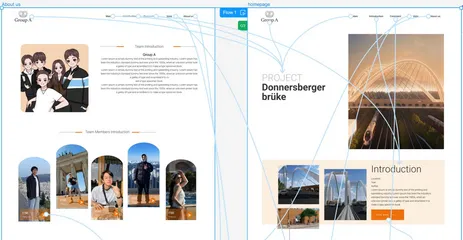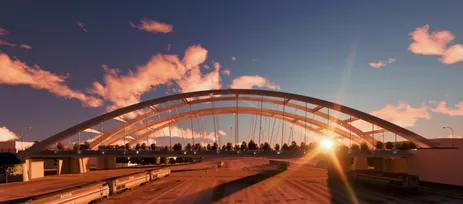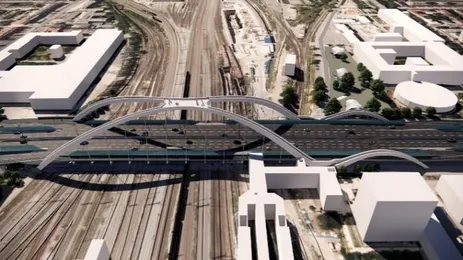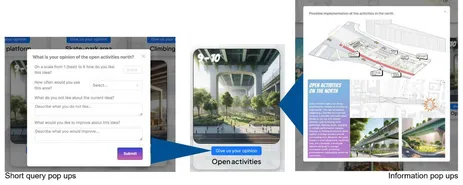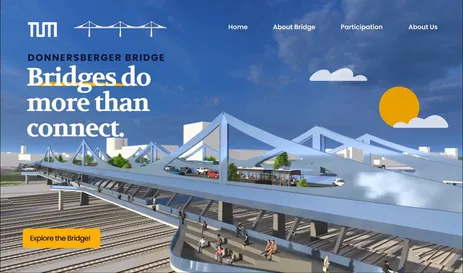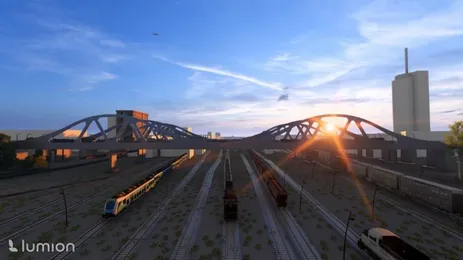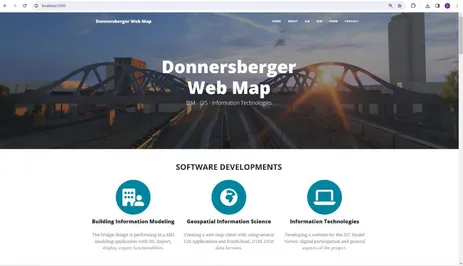Fusion Lab WS 23/24
Design task
For the design task, you are asked to investigate the importance of the Donnersberger Bridge for all transportation means, develop possible replacement bridge designs, and present a proposal on how to prevent traffic collapse during the renovation/ replacement using digital tools and methods.
The bridge provides access to the train station Donnersberger Bridge and should provide means for motor vehicles, bikes, and pedestrians to cross. Please analyze the site using existing data and suggest a design for the bridge based on the data analysis. Please include a suggestion for the traffic management during the building process. Options are that the old bridge remains partly open during the process, another one is the erection of a temporary bridge.
The design must support the idea of providing a new landmark for the city of Munich. The goal is to provide an iconic design, while respecting sustainability and cost efficiency aspects. To this end, “exciting“ bridge construction methods should be considered.
When creating your bridge model for the new Donnersberger Bridge, please take note of the following:
- All components should have a sufficient class assignment.
- Sufficient material properties should be assigned to create renderings. Detailed semantic information (e.g., stiffness values or allowable stresses) should be estimated to the best knowledge available.
- Geometric details should be present up to LOG 200 in BIM models and LOD 2 (lane level granularity) for CityGML 3.0 compliant datasets.
The bridge designs from the different groups will serve as a variant pool for all software solutions.
Software task
The course participants are expected to develop a web-based system that enables the public participation in the design process. It is supposed to consist of a web frontend providing both 3D and 2D views of the bridge and its surroundings and enabling the participants to leave comments. The server side must accordingly provide a database with the different design models and hold the comments. Third-party sources providing 3D city models (CityGML) and for example, traffic data, are supposed to be integrated via web technologies. The bridge design will be performed in a BIM modeling application with IFC export functionalities. Hence, support for importing and displaying IFC by the platform is required. In addition, the integration of a traffic simulator would be beneficial.
The use of available (open-source) libraries, such IFC.js, XBIM WebGui, or Autodesk Platform Services is strongly encouraged.
In the software development part, we would like to investigate further the expected impact of construction and design solution on the city district, during and after the development work. For this, please consider forecasts about the future mobility behavior and foresee sufficient capacities for public transport connecting both sides of Donnersberger Bridge.

